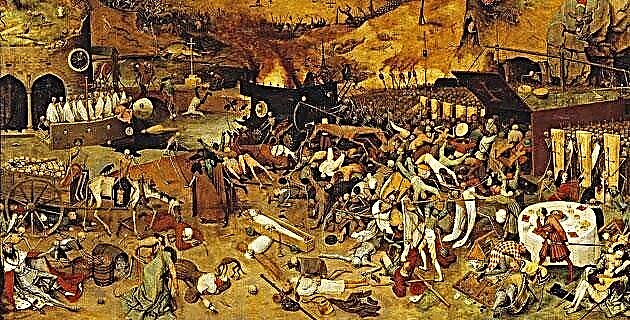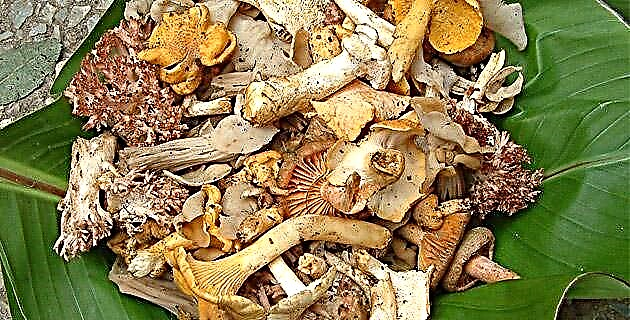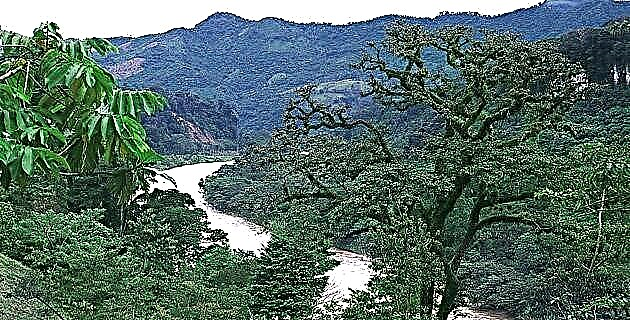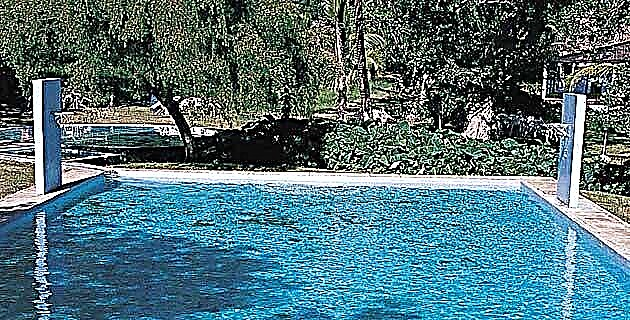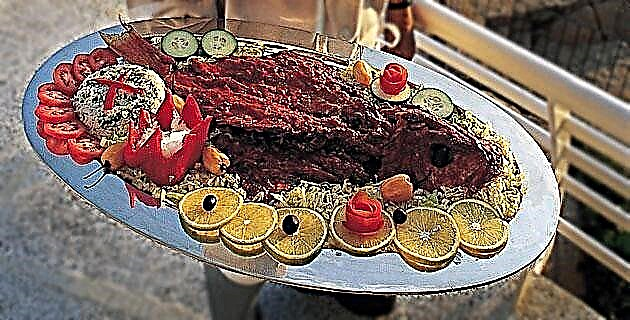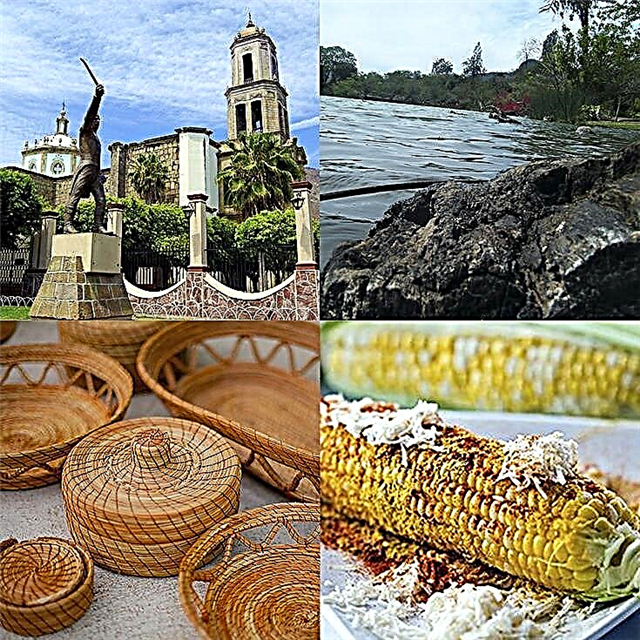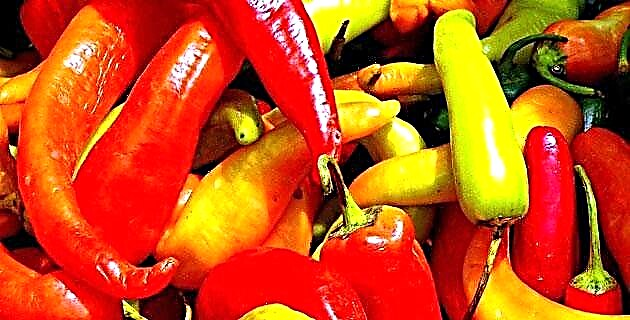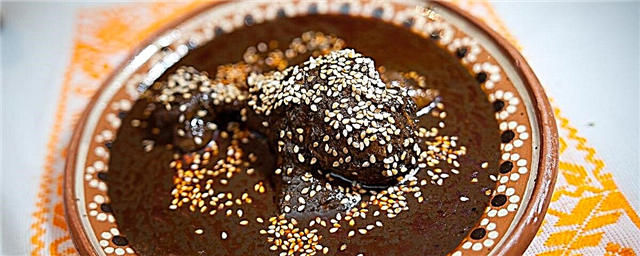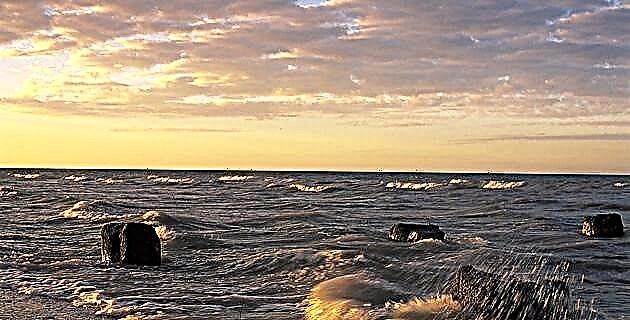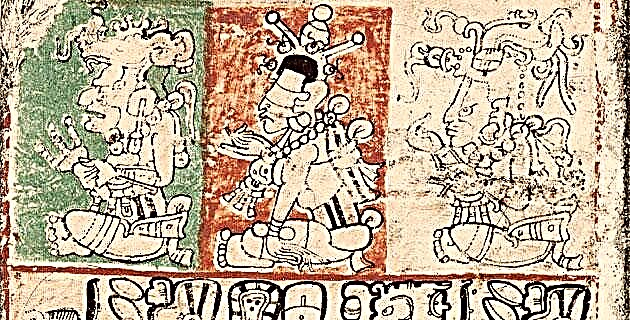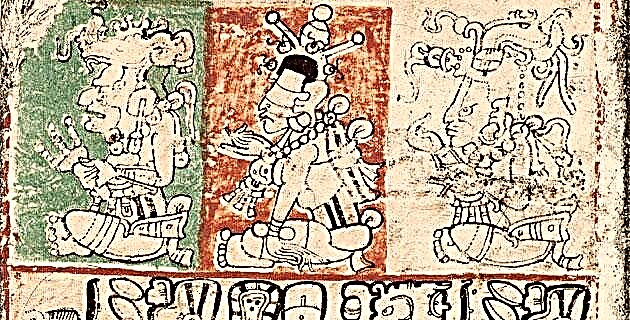
The young painter hastened to reach the temple of the craftsmen's quarter; He came from the market, where he had bought the materials to prepare the paintings.
This was the day when the merchants settled in the plaza of the Sanctuary of the Red Ocher, or of the Burnt Earth, Ñu Ndecu or Achiutla, to sell their products. Among the merchants were the dyers, who brought the red cochineal for the bright red or quaha, the carbon black or tnoo, which was the soot that was scraped from the pots, the blue or ndaa that was extracted from the indigo plant, and the yellow or quaa of the flowers, as well as the mixture of the latter, which produced the fresh green or yadza, and others.
When he crossed the courtyard, the young man looked at other apprentices who had brought the deer skins with which the books or tacu were made, they were clean, soft and flexible. The tanners stretched them out on wooden boards and cut them with sharp flint knives, then gluing pieces together to form a long strip several meters long.
In one corner he placed his net bag on a tule mat and took out of it the colored paste that came in the form of hard loaves, which he crushed and ground into powder; then this powder was passed through a cloth that served as a strainer to obtain only the finest. In the same way, he treated the amber piece of crystallized resin extracted from the mesquite tree, or pine, and which was used to adhere the color pigment to the surface of the skin, previously covered with a thin layer of white plaster.
Nearby was a hearth made up of three stones, and on this a large clay pot in which the water boiled. With it, each of the materials was diluted and re-sieved several times, until a thick liquid was obtained, which was mixed with a certain white earth and a little rubber, thus making the paint ready.
Then the paintings were carried in small pots to the portal, since under its shadow there were several painters dedicated to making books, or tay huisi tacu, sitting on the floor on mat. One of them, the master of the trade or tay huisi, was shaping the figures on the white strip, which had been folded like a screen, since with each fold the pages were formed, and on them he had drawn several thick lines with red paint that served as lines or yuque, to distribute the drawings.
Once the sketch was done with a diluted black ink, he sent the book to the colorists or tay saco, who were in charge of applying the color planes or noo that corresponded to each figure, with a kind of brushes. Once the paint had dried, the codex was returned to the master, who outlined the final contours with black.
The delicate process of making one of these manuscripts was done with such care that it took several months and even a year to complete. And at the end, such a precious work was kept closed and wrapped in a new blanket of the finest white cotton; then it was kept in a stone, wood or vegetable fiber box for its protection, remaining under the custody of a guardian priest.
These valuable objects, even considered divine, were called Ñee Ñuhu or Sacred Skin, since the knowledge of the techniques for their elaboration, as well as the realization of their figures, had been invented by the Great Spirit Taa Chi or Tachi , the God of the Wind Ñu Tachi, in the time of the origins. This deity was also known as the Feathered or Jeweled Serpent, Coo Dzavui, patron of artisans and scribes, who performed various rituals in his honor. Among them were the preparatory ones for writing by painting, since when reproducing the figures of the codices or taniño tacu, an instrument impregnated with the divine character of its creator was being used.
Likewise, it is said that this god had started the ruling dynasties of the Mixteca, which he also protected; For this reason, in order to be trained as book painters, they were chosen from among the young noblemen, men and women, those whose parents had held this office; Above all, that they had skills for drawing and painting, because this meant that they had the god within their hearts, and that the Great Spirit was manifested through them and their art.
It is probable that their training began at the age of seven, when they went to a workshop, and that at fifteen they were specializing in some subject, whether they were dedicated to being scribes of the temples or the palaces of the lords, who commissioned and they sponsored the making of these manuscripts. They would go through several levels, until they became a master painters, who was a wise priest or ndichi dzutu, and they would take under their tutelage several apprentices who memorized the stories and traditions of the community, at the same time that they acquired knowledge about their environment. and the universe.
Thus, among other things, they learned to observe the movement of the stars at night, and to follow the path of the Sun during the day, to orient themselves on earth, recognizing rivers and mountains, the properties of plants and the behavior of animals. . They also had to know the origin of their own people, where they had come from and what kingdoms they had founded, who their ancestors were and the exploits of the great heroes. They also knew about the creators of the universe, the gods and their various manifestations, as well as the offerings and rituals that had to be carried out in their honor.
But above all they were taught the art of writing by painting, which was also called tacu, and which ranged from the preparation of materials to the technique for painting and the practice of drawing figures, since there were rules on how they should be reproduced images of human beings and animals, earth and plants, water and minerals, including the stars of the sky, day and night, deities and supernatural beings that represent the forces of nature, such as the earthquake, the rain and the wind, and many of the objects created by man, such as houses and temples, ornaments and clothes, shields and spears, etc., which occupied an important place among the Mixtecs.
All of them made up a set of hundreds of figures, which were not only paintings of beings and objects, but each one also corresponded to a word from the Mixtec language dzaha dzavui, that is, they were part of a writing in which the images transcribed terms of this language, and their set made up the texts of the pages, which in turn made up the book.
Thus, then, the knowledge of their language and the highly esteemed art of expressing oneself well were part of his trade; in this regard, they liked word games (especially those that sounded almost the same), the formation of rhymes and rhythms and the association of ideas.
The codices were surely read aloud to those present, using flowery, yet formal language, in order to recreate a rich and inspired reading through their figures.
For this, the book was opened in two or four pages at a time, and almost always read from right to left, starting in the lower right corner, following the figures that were distributed between the red zigzag lines, like the movement of a snake or coo, that walks along the manuscript, going up and down. And when one side was finished, he would turn to continue with the back.
Due to their content, the ancient codices or books were of two types: some made reference to the gods and their organization in the ritual calendar; These manuscripts, where the count of the days or tutu yehedavui quevui was, can also be called Ñee Ñuhu Quevui, Book or Sacred Skin of Days. On the other hand, there were those that dealt with the demigods or the descendants of the god of the Wind, that is, the noble lords already deceased and the story of their exploits, which we could name as Ñee Ñuhu Tnoho, Book or Sacred Skin of the Lineages .
Thus, the writing invented by the god of the Wind was used to deal with the other deities and those considered their descendants, the men-gods, that is, the supreme rulers.

